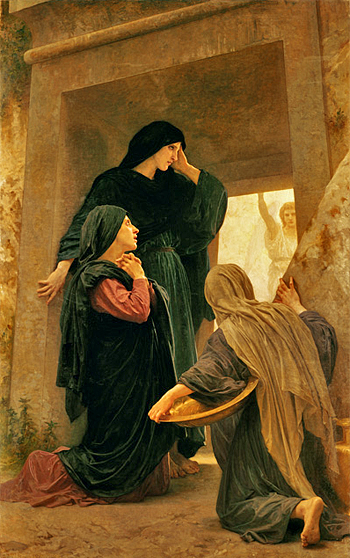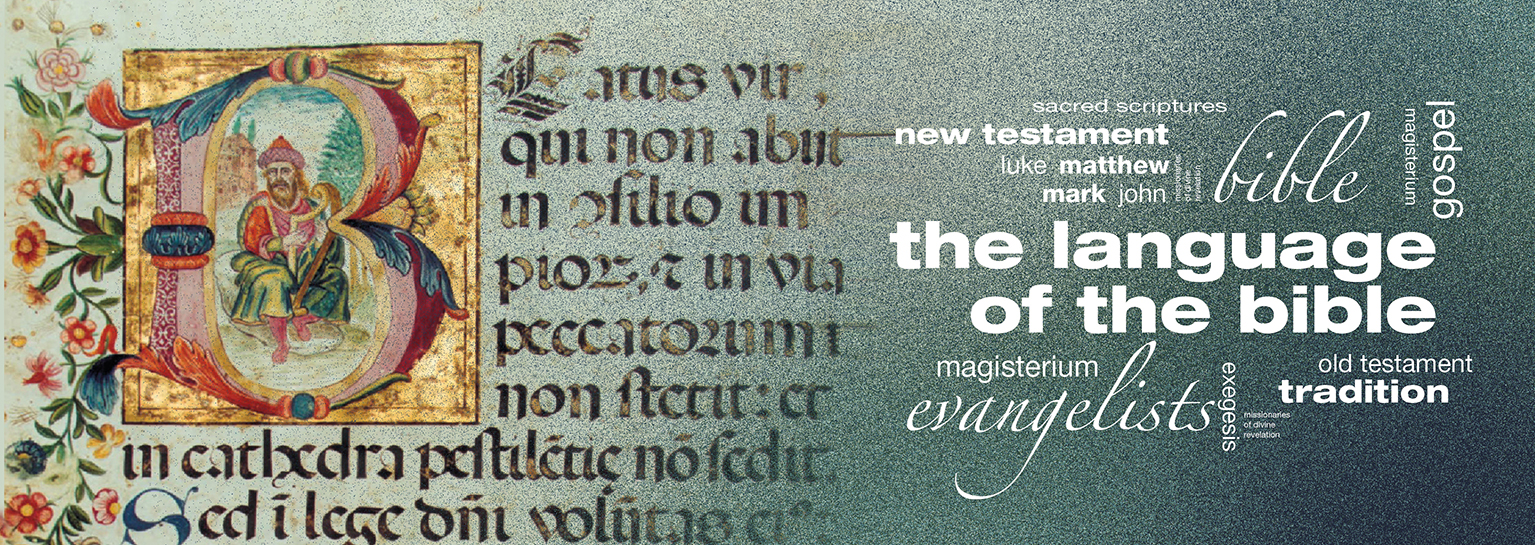 Mark’s Gospel (Mk 16:1-8) tells us that early in the morning, on the first day of the week, as the sun was rising, Mary Magdala, Mary, the mother of James, and Salome went to the tomb with spices to anoint the body of Jesus. The women were asking each other who would remove the large tomb stone that covered the entrance to the tomb. Arriving at the tomb, with great surprise, they notice that the tombstone had already been rolled away.
Mark’s Gospel (Mk 16:1-8) tells us that early in the morning, on the first day of the week, as the sun was rising, Mary Magdala, Mary, the mother of James, and Salome went to the tomb with spices to anoint the body of Jesus. The women were asking each other who would remove the large tomb stone that covered the entrance to the tomb. Arriving at the tomb, with great surprise, they notice that the tombstone had already been rolled away.
Entering the tomb, the women see a young man, dressed in white sat on the right hand side. The position in which they find him expresses his authority and the authoritativeness of his communication. The fact that he is sat on the right signifies that he is about to communicate a happy announcement.
The women are afraid by the heavenly apparition but the angel reassures them: “Do not be afraid”! This is a typical expression used in the Old Testament during the ‘epiphanies’ which predisposes the person to receive and listen to a heavenly message without fear. “You seek Jesus of Nazareth, the crucified. He has been raised; he is not here. Behold the place where they laid him.” (v 6). The verb that expresses the resurrection is passive because the act of the resurrection is the work of God. Jesus, even when risen, maintained the wounds of crucifixion. In this way, Mark relates Jesus resurrection to His previous life, above all else His passion and death, from which God liberated Him by releasing the ties of death and clothing Him in glory and honour (cfr Heb 2:9).
The angel then sends the women to be the first messengers of the resurrection to the disciples and, in particular, Peter: “But go and tell his disciples and Peter, ‘He is going before you to Galilee; there you will see him, as he told you.” (v7) The angels words ‘going before you’ is translated in the original Greek as “proaghei” which means to gather and to lead. Therefore, verse 7 recalls Mk 14:27 where Jesus cites Zc 13: 7 to his disciples: “All of you will have your faith shaken, for it is written: ‘I will strike the shepherd, and the sheep will be dispersed.” Now, after His resurrection, Jesus gathers his disciples again to confirm them in their faith in Him so that they will become His witnesses in Galilee and then throughout the whole world. Galilee, the region that was privileged with Christ’s teaching, now becomes the prelude to the missionary mandate of the Church towards all men.
Mark concludes his account of the Resurrection with the women’s reaction who fled and said nothing because they were afraid. This is the reaction of humanity before the resurrection, that great event that transcends every human hope.
Mark therefore concludes his Gospel with the image of the empty tomb as this is a powerful image in which to recall the resurrection. The Catechism of the Catholic Church affirms the same message: “Why do you seek the living among the dead? He is not here, but has risen.” The first element we encounter in the framework of the Easter events is the empty tomb. In itself it is not a direct proof of Resurrection; the absence of Christ’s body from the tomb could be explained otherwise. Nonetheless the empty tomb was still an essential sign for all. Its discovery by the disciples was the first step toward recognizing the very fact of the Resurrection. This was the case, first with the holy women, and then with Peter. The disciple “whom Jesus loved” affirmed that when he entered the empty tomb and discovered “the linen cloths lying there”, “he saw and believed”. This suggests that he realized from the empty tomb’s condition that the absence of Jesus’ body could not have been of human doing and that Jesus had not simply returned to earthly life as had been the case with Lazarus.” (CCC 640) The empty tomb remains a necessary presupposition for faith in the resurrection.
“So the story does not end with the tomb, instead it bursts forth from the tomb: just as Jesus promised us, it happened, and it will happen again!” (Stations of the Cross by Cardinal Angelo Comastri, 14th Station, Coliseum, 2006)
“The signs of the resurrection testify to the victory of life over death, love over hatred, mercy over vengeance.” (Pope Benedict XVI Urbi et Orbi Message Easter 2012)
